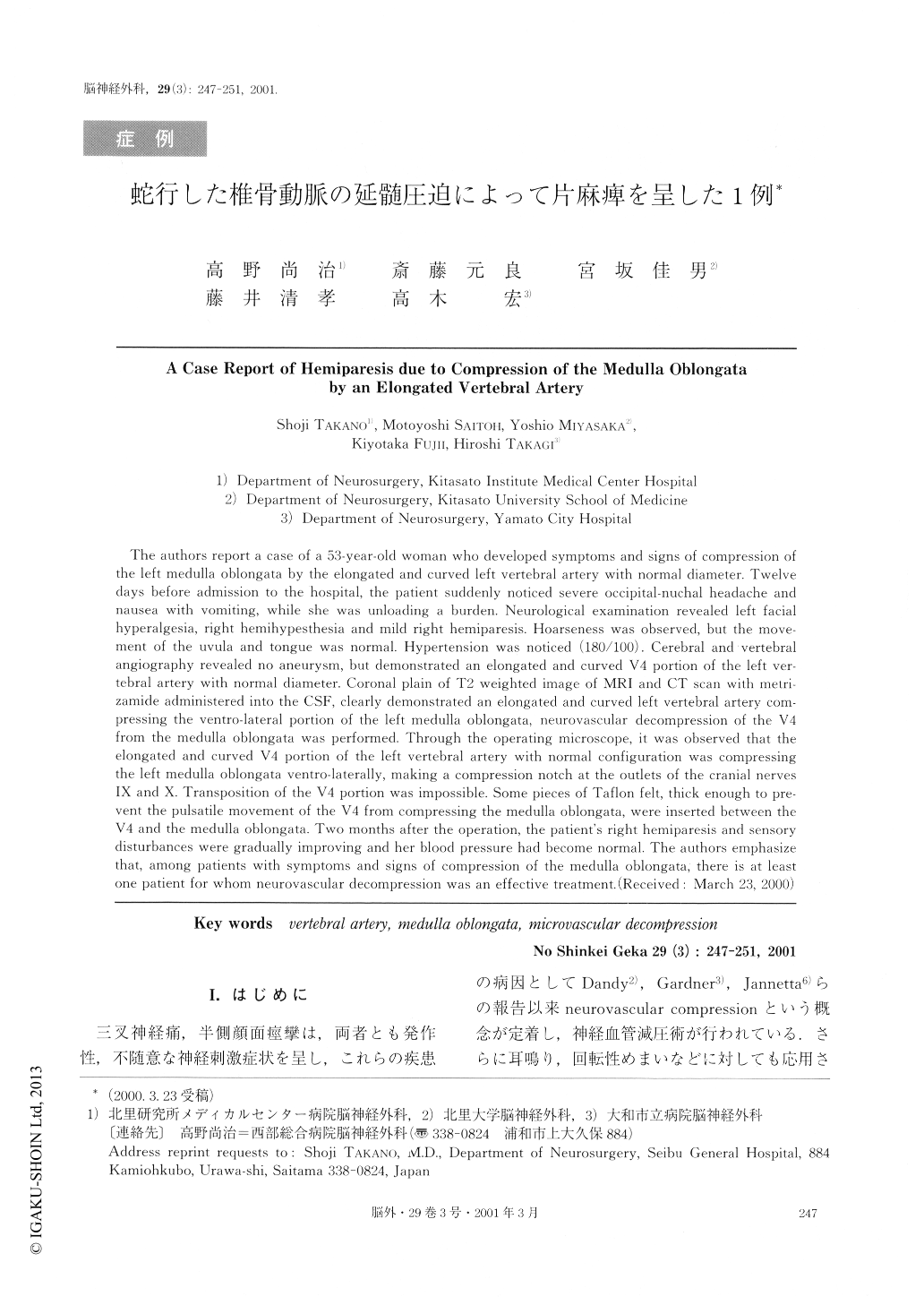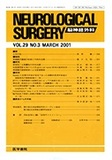Japanese
English
- 有料閲覧
- Abstract 文献概要
- 1ページ目 Look Inside
I.はじめに
三叉神経痛,半側顔面痙攣は,両者とも発作性,不随意な神経刺激症状を呈し,これらの疾患の病因としてDandy2),Gardner3),Jannetta6)らの報告以来neurovascular compressionという概念が定着し,神経血管減圧術が行われている,さらに耳鳴り,回転性めまいなどに対しても応用され6),本態性高血圧への治療の報告もあり13,18),hyperactive cranial nerve dysfunctionの概念は定着している.しかし,これらとは異なり,hypo-active cranial nerve dysfunction syndromeの報告例は少なく,ほとんどが拡張,蛇行した椎骨・脳底動脈による圧迫症状を呈した報告である.われわれは,正常径の椎骨動脈によって延髄が圧迫され片麻痺症状を呈した症例を経験した.症例は頭痛・嘔吐で発症し,その後麻痺が出現し,あたかもくも膜下出血を疑わせ,興味ある症例として報告する.
The authors report a case of a 53-year-old woman who developed symptoms and signs of compression ofthe left medulla oblongata by the elongated and curved left vertebral artery with normal diameter. Twelvedays before admission to the hospital, the patient suddenly noticed severe occipital-nuchal headache andnausea with vomiting, while she was unloading a burden. Neurological examination revealed left facialhyperalgesia, right hemihypesthesia and mild right hemiparesis. Hoarseness was observed, but the move-ment of the uvula and tongue was normal. Hypertension was noticed (180/100). Cerebral and vertebralangiography revealed no aneurysm, but demonstrated an elongated and curved V4 portion of the left ver-tebral artery with normal diameter. Coronal plain of T2 weighted image of MRI and CT scan with metri-zamide administered into the CSF, clearly demonstrated an elongated and curved left vertebral artery com-pressing the ventro-lateral portion of the left medulla oblongata, neurovascular decompression of the V4from the medulla oblongata was performed. Through the operating microscope, it was observed that theelongated and curved V4 portion of the left vertebral artery with normal configuration was compressingthe left medulla oblongata ventro-laterally, making a compression notch at the outlets of the cranial nervesIX and X. Transposition of the V4 portion was impossible. Some pieces of Taflon felt, thick enough to pre-vent the pulsatile movement of the V4 from compressing the medulla oblongata, were inserted between theV4 and the medulla oblongata. Two months after the operation, the patient's right hemiparesis and sensorydisturbances were gradually improving and her blood pressure had become normal. The authors emphasizethat, among patients with symptoms and signs of compression of the medulla oblongata, there is at leastone patient for whom neurovascular decompression was an effective treatment.

Copyright © 2001, Igaku-Shoin Ltd. All rights reserved.


